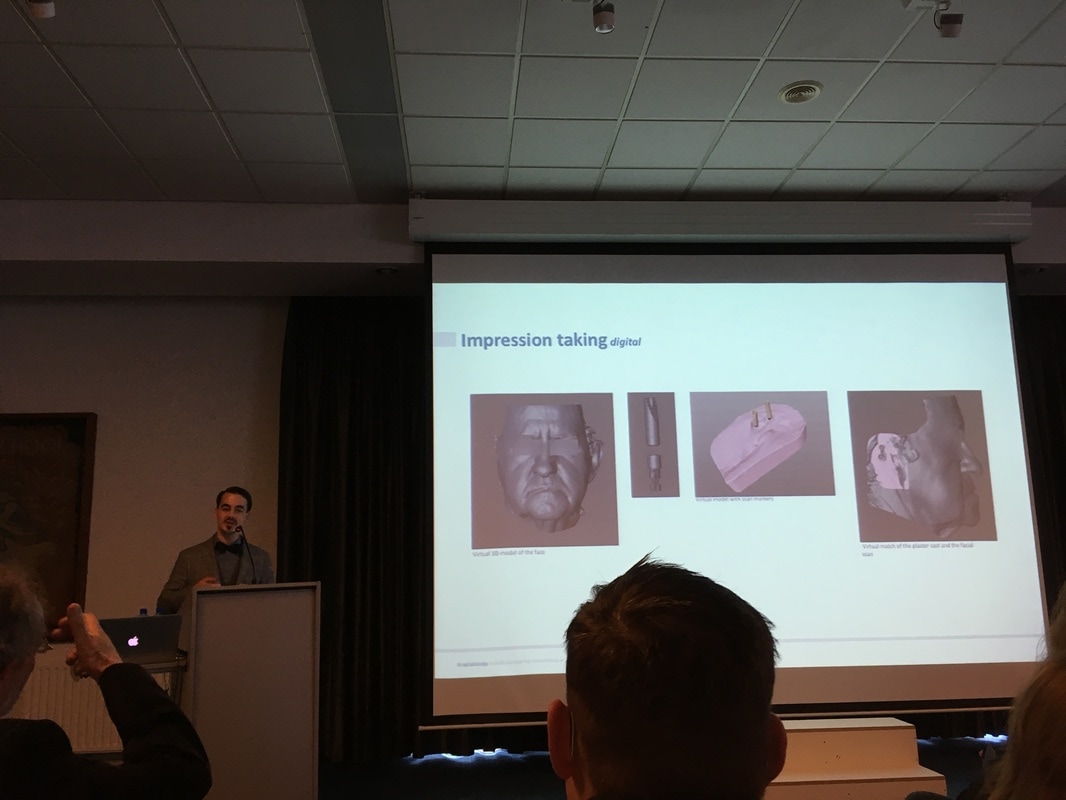On the first day, we assembled at the Hotel Management School for our first round of talks. Several of the lectures centered on history. Bill Andrews of Augusta University and Lorraine Daston of the Max Planck Institute demonstrated the importance of illustration through time. Illustrators have worked closely with scientists throughout history. The images they created not only founded our knowledge of anatomy and biology, but also had a great influence on the science that came after. Scientific images are always the product of four eyes; the scientist's and the artist's. As a result, every scientific or medical image leaves a trace of conflicts in differing epistemic virtues of the people involved. Esmee Winkel, from the Naturalis Biodiversity Center, then gave us some modern examples of this type of conflict in her work with botanists today.
This year, the conference was held in Maastricht during the prestigious TEFAF art and antiques fair. After our talks, we had the opportunity to explore the giant TEFAF exhibition. We quickly narrowed in on historic science illustration. I thoroughly enjoyed seeing the rare books, illustrations by Maria Sibylla Merian, hand-painted lithographs of birds and mammals, and spectacular anatomical paintings by d'Agoty from the 1700s. We heard about a number of exciting science illustration programs in Zurich, Dundee, France, and a fledgeling program starting this year in Spain. One of my favorite talks was by a new freelance illustrator, Jessica Koren. Jessica is a medical illustrator and presented us with a beautifully honest talk about sticking her neck out, piloting her business, and overcoming fears in order to grow. I think we all responded to her talk because we all share these fears, doubts, and challenges when finding clients and valuing our work. One of my favorite tidbits from this talk was her method of keeping a Captain's Log for her projects, writing down all that happened, went wrong, and how to fix it next time.
We also heard from Pancras Dijk who gave us a window into the history and editorial process at National Geographic. While most people immediately think of stunning photography when they think about National Geographic, the magazine relies heavily on information graphics to tell stories, bring the past to life, and visually communicate complex concepts. Pancras presented a very clear argument for why illustrations are so important and how they accomplish communication in a way that photographs often cannot. Our final talk came from Erik von Ommen, a bird painter, who showed us beautiful videos about his process. His talk was very inspirational as he explored many techniques including etching, wood cuts, watercolor, sumi-e ink, oil, and even gold-leaf. His advice is to take risks, show who you are, and don't be afraid to think outside the box.
0 Comments
Your comment will be posted after it is approved.
Leave a Reply. |
Categories
All
|
Proudly powered by Weebly











 RSS Feed
RSS Feed